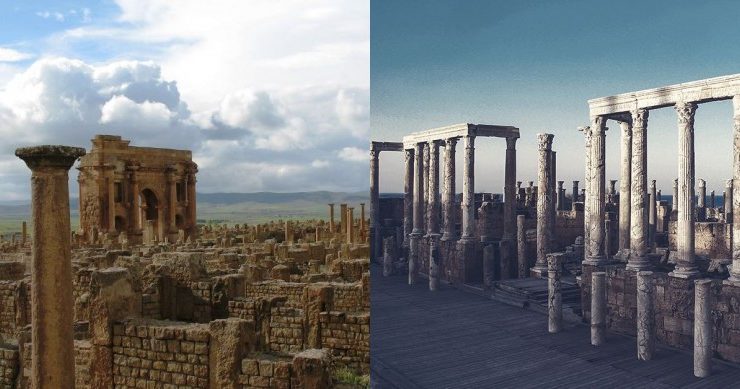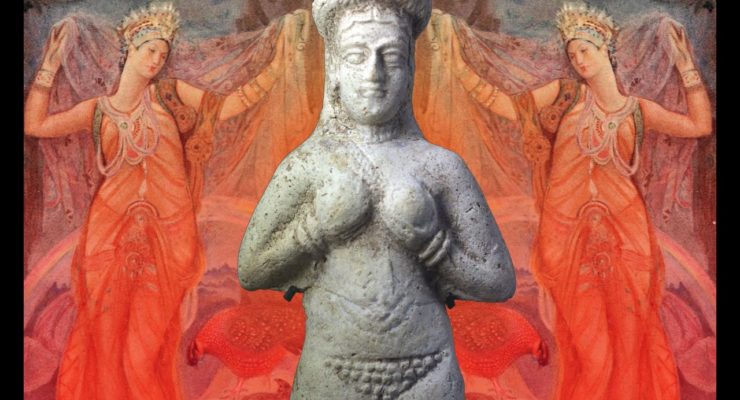(Atlantean Gardens) The similarity between other later east coast US and European Stone Age stone tool technologies has been noted before. But all the US European-style tools, unearthed before the discovery or dating of the recently found or dated US east coast sites, were from around 15,000 years ago – long after Stone Age Europeans (the Solutrean cultures of France and Iberia) had ceased making such artifacts.
atlantean gardens
Fallen Angels of Atlantis and Archaic DNA (Video)
(Atlantean Gardens) Having once been a privileged and favored people, the Atlanteans became corrupt and degraded, according to Plato, by interbreeding with mortals and diluting their noble seed which allegedly descended from the gods. So what did Plato mean by mortal admixture, when he said that the Atlantean divine portion began to fade away and became too diluted, too often, by the mortal admixture?
Lost Islands, Giants, and Ancient Submerged Cities (Video)
(Atlantean Gardens) According to Irish folklore an island named Hy-Brasil was located off of the west coast of Ireland, and although it was never officially found, the Island continued to appear on maps until at least 1873. The name derives from the Celtic word Breasal meaning ‘High king of the world’.
The Seven Great Hermetic Principles (Video)
(Atlantean Gardens) The Kybalion: Hermetic Philosophy, originally published in 1908, is a book claiming to be the essence of the teachings of Hermes Trismegistus. Purportedly based upon ancient Hermeticism, its philosophies became founding pillars within the New Thought movement of the early 20th century. The book devotes a chapter to each of its seven “Principles”, or axioms.
Lost History of the Empire of Atlantis (Video)
(Atlantean Gardens) When people talk about Atlantis, they are usually referring to the writings of Plato, the Athenian philosopher who lived during the Classical period in Ancient Greece. According to Plato, massive cataclysms ended a powerful civilization 11,500 years ago , which incidentally is the same date anthropologists recognize as the end of the Pleistocene and start of our current Holocene age. Plato concedes that he learnt the legend of Atlantis from Solon who, in turn, got it from Egyptian priests that had preserved the tale on stone hieroglyphs. That said, there are other ancient sources which speak to a similar scenario.
Secret Mysteries of the Ancient Goddess
(Robert Sepehr) Before Christianity existed, there was what is now commonly known as Paganism, which is also called Polytheism, the belief or worship of more than one God. Tritheism is a word that comes from the Greek, meaning ‘Three Divinity’, and in antiquity, as well as in certain forms of Neopaganism, the Triple Goddess is a deity or archetype viewed as a triunity of three distinct aspects or figures united in one being.
Atlantis and the Lost Tribes
(Robert Sepehr) Global sea levels were 400 feet lower during the late Pleistocene, or Ice Age, when Atlantis was said to have existed in the Atlantic Ocean. The glaciers melted in several spurts, with a major cataclysm taking place 11,500 years ago, or 9500 BC, the date given by Plato for the destruction of Atlantis, which perfectly matches the geological record.
Meetings with the Gods (Video)
(Atlantean Gardens) According to ancient myths and legends from antiquity, an advanced sea faring civilization established colonies around the world, introducing agriculture to hunter gatherers on both sides of the Atlantic, usually intermarrying into the tribes and becoming their nobility, leaving behind a cultural and genetic legacy that often resulted in deification.
The Emerald Tablet of Thoth/Hermes
(Atlantean Gardens) Hermeticism is a philosophical tradition that gets its name from Hermes Trismegistus, a word which means thrice-greatest Hermes. Hermes in ancient Greek mythology was the emissary or messenger of the Gods, able to move freely between the worlds of the mortal and the divine, associated with the planet Mercury, as well as the caduceus, which is the famous symbol of a winged staff intertwined with two snakes.
Before The Flood: Atlantis and Antediluvian Anthropology (Video)
(Robert Sepehr) Over 2,000 years ago, a wise Egyptian priest named Sonchis told a respected Greek statesman, Solon, about a spectacular legend recorded on stone, translated to Greek from ancient Egyptian hieroglyphs, about powerful sea-faring empires, massive global cataclysms, and a great war of the Titans.
Inner Earth, Forbidden Kingdoms Revealed (Video)
Inner Earth, Forbidden Kingdoms Revealed (Video)
The Legend of Beowulf
(Atlantean Gardens) One of the most important works of Old English literature, Beowulf is an epic poem consisting of over 3,000 lines, beautifully written in alliterative verse. Set in Scandinavia, Beowulf was the hero of a northern Germanic tribe, in what is now southern Sweden, who comes to the aid of a Danish king, who came under attack by Grendel, a descendant of the Biblical Cain.
Ancient Origins of the Heart (❤) Symbol
(Robert Sepehr) Love’s most universally accepted symbol, the one we most commonly associate with a heart, doesn’t really resemble the organ it is said to represent, so what is this symbol’s (❤) true ancient origins?
Goddess of the Underworld — Secret History of the Vatican
(Robert Sehepr) In Greek mythology, the underworld is where souls go after death. The original Greek idea of afterlife is that, at the moment of death, the soul is separated from the corpse, taking on the shape of the former person, and is transported to the entrance of the underworld.
Erik the Red Norse Viking Settlements
(Robert Sepehr) Erik Thorvaldsson, known as Erik the Red, was a Norwegian Viking, remembered in medieval and Icelandic saga sources as having founded the first Norse settlement in Greenland. His son, Leif Erikson was credited as the first known European to have discovered North America. Studies have found that almost all ivory traded throughout Europe in Medieval times came from Greenland walruses, which became extinct due to overhunting, contributing to the abandonment of Viking the settlements.














